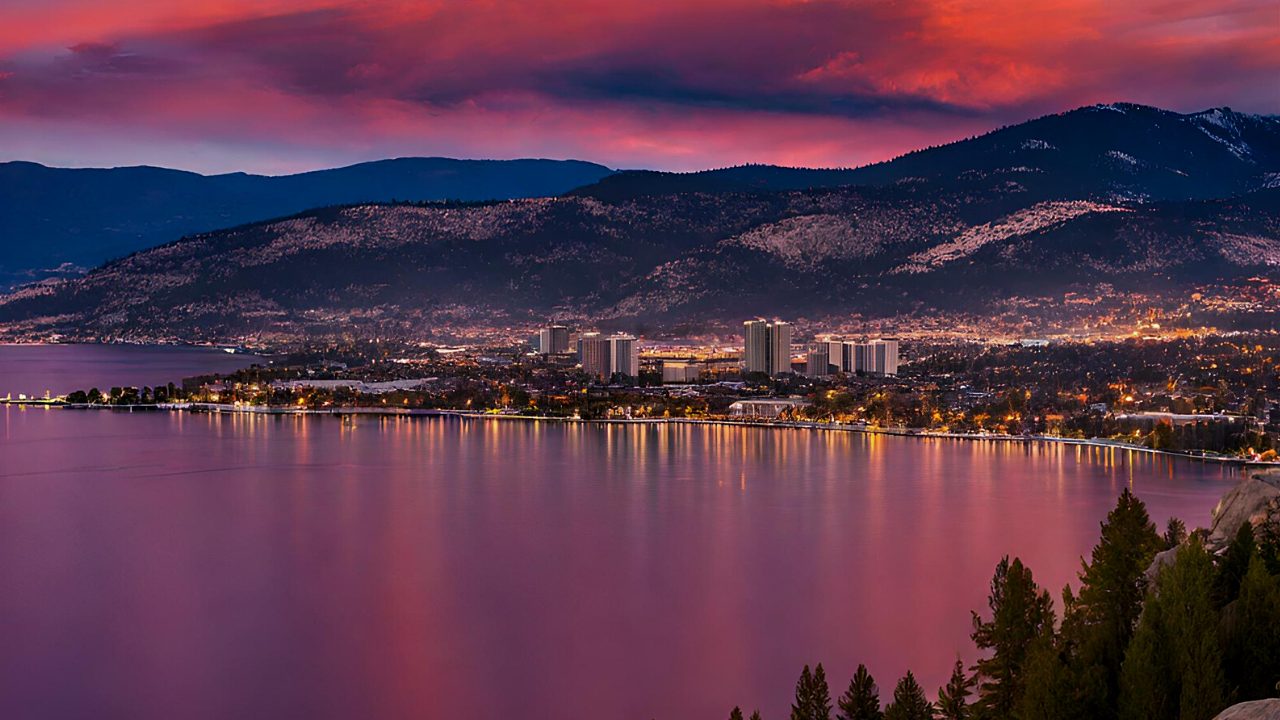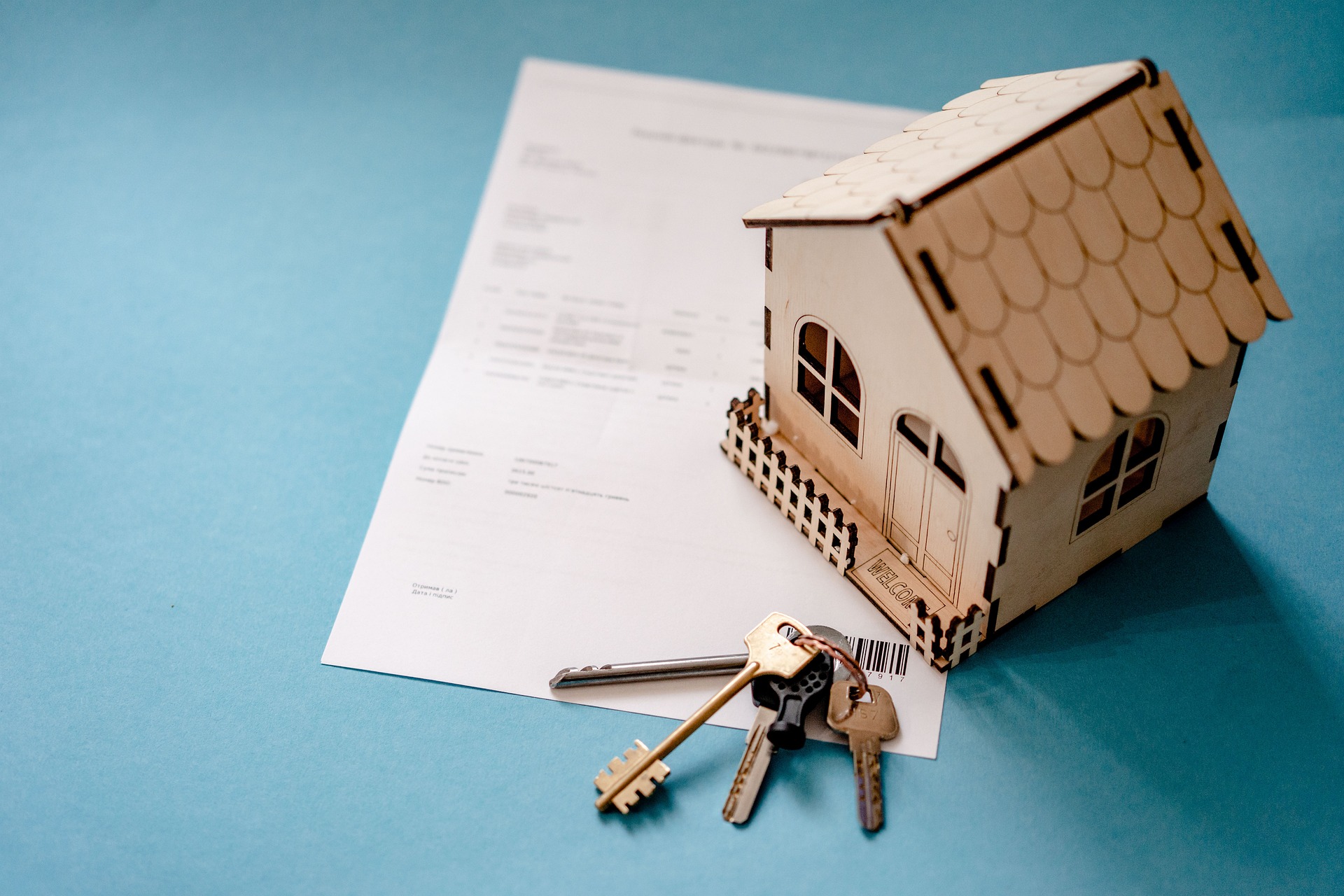Moving to Kelowna BC? 10 Things You MUST Know Before Relocating

Moving to Kelowna, BC, is an exciting prospect, but before you pack your bags, it’s essential to understand the city’s nuances. This guide covers ten crucial aspects to ensure a smooth transition.
Kelowna Weather
Kelowna’s weather is a captivating fusion of seasons that paints a vivid tapestry across the Okanagan Valley. Winters bring occasional heavy snowfall, transforming the city into a winter wonderland without the extreme cold seen in many Canadian cities. This unique balance allows residents to enjoy the beauty of snow while relishing milder temperatures.
Come summer, Kelowna blossoms into an outdoor paradise. Warm temperatures and ample sunshine create an ideal setting for year-round activities. The city’s proximity to Okanagan Lake enhances the experience, offering opportunities for water sports, hiking, and leisurely days by the beach. Kelowna’s weather isn’t just a backdrop; it’s an ever-changing canvas, inviting residents and visitors to embrace the diverse beauty each season brings to this year-round playground.
Kelowna Schools
Kelowna Real Estate
To navigate Kelowna’s real estate successfully, it’s crucial to grasp the dynamic nature of the market. As of January 2024, the average home prices underscore the city’s housing landscape, with single-family homes commanding an average of $1,005,010, townhomes at $697,324, and condos at $484,254. These figures not only reflect the city’s popularity but also present a spectrum of housing options catering to various preferences and budget considerations.
Kelowna’s neighbourhoods play a pivotal role in shaping these housing dynamics. Areas like Rutland, known for its affordability and burgeoning developments, appeal to those seeking entry-level prices and promising investment opportunities. In contrast, Glenmore exudes a family-friendly atmosphere with convenient access, while the lower mission beckons with luxurious waterfront living. Each neighbourhood offers a distinct lifestyle, creating a real estate market that accommodates the diverse needs and aspirations of both residents and investors alike.
Kelowna High Cost of Living
Recognizing the high cost of living in Kelowna is essential for prospective residents. While comparatively more affordable than larger cities, the city demands careful financial planning. As of January 2024, the average yearly salary hovers around $50,558, indicating the need for prudent budgeting to align with the cost of living.
The real estate market, a significant factor in Kelowna’s living expenses, reveals an average house price of $728,862. This figure emphasizes the necessity for individuals and families to carefully assess their financial capabilities and housing requirements. While Kelowna presents a more reasonable cost of living compared to major urban centers, prospective residents are encouraged to approach their relocation with a well-thought-out financial strategy to ensure a comfortable and sustainable lifestyle in this vibrant Okanagan city.
Kelowna Neighbourhoods
Delving into Kelowna unveils a rich tapestry of neighbourhoods, each with its own unique charm. The vibrant downtown area pulsates with energy, offering a dynamic urban lifestyle surrounded by a ton of amenities and entertainment options. For those seeking a family-friendly atmosphere, Glenmore emerges as an inviting choice, providing convenient access and a welcoming community feel.
Nestled amidst picturesque landscapes, the Upper Mission stands as a testament to Kelowna’s scenic beauty. This area offers a tranquil and visually stunning environment, making it an ideal haven for those who appreciate a blend of nature and residential living. Choosing the right Kelowna neighbourhood becomes a personalized journey, aligning with individual preferences and lifestyle aspirations. I highly recommend connecting with a local expert or real estate agent to help get a better idea of what area might suit your lifestyle needs the best.
Difference Between Kelowna and West Kelowna
While often perceived as interchangeable, Kelowna and West Kelowna present notable differences in it’s overall environment and lifestyle, influencing the choice between city living and a more laid-back suburban atmosphere. Kelowna, as the larger and more urbanized of the two, boasts a bustling cityscape with a wide array of amenities, cultural offerings, and a dynamic urban lifestyle.
On the flip side, West Kelowna offers a different experience, providing a more relaxed and suburban atmosphere. The lifestyle here is characterized by scenic landscapes, a slower pace, and a close-knit community vibe. Understanding these distinctions becomes essential for anyone contemplating a move, as it enables individuals to align their living preferences with the ambiance they desire. Whether one leans towards the vibrant urban environment of Kelowna or the tranquility of suburban living in West Kelowna, understanding these differences ensures a well-informed decision that resonates with your unique.
Kelowna Transportation System
Navigating Kelowna is a seamless experience, thanks to its well-designed transportation infrastructure. The city’s comprehensive system, operated by BC Transit, encompasses a robust bus network, including express routes that efficiently connect various parts of the city. The convenience is further enhanced by a user-friendly mobile app, offering real-time information and facilitating smooth travel planning.
Beyond traditional public transportation, Kelowna embraces modern mobility solutions, with the inclusion of ride-sharing services like Uber. This additional layer of accessibility provides residents and visitors with flexible and convenient travel options, ensuring that getting around the city is not only efficient but also tailored to individual preferences.
Hiking in Kelowna
For outdoor enthusiasts, Kelowna is nothing short of a paradise. The city, embraced by a stunning natural landscape of mountains, lakes, and forests, presents a haven for nature lovers. The diverse array of hiking trails available caters to enthusiasts of all levels, providing an opportunity for everyone to explore the captivating outdoors.
Kelowna’s trails offer a variety of experiences, from the exhilaration of conquering challenging peaks to the tranquility of leisurely nature walks. Whether you seek the panoramic views from the summits of Knox Mountain or the serene ambiance along the Mission Creek trail, Kelowna’s outdoor offerings embrace the varied preferences of hikers. This abundance of natural beauty not only promotes physical well-being but also fosters a deep connection with the breathtaking landscapes that define the Okanagan region. In Kelowna, the great outdoors isn’t just a destination; it’s an immersive experience catering to the heart and soul of every outdoor enthusiast.
Restaurants and Nightlife
Big White Ski Resort
For winter enthusiasts, the nearby Big White Ski Resort stands as a beacon of snowy adventures. Renowned for its powdery slopes and an array of winter activities, this resort provides an idyllic escape for those seeking the thrill of the cold season. Whether you’re a skiing aficionado, snowboarder extraordinaire, or someone interested in more unconventional activities like snowshoeing and ice climbing, Big White offers a winter wonderland catering to a diverse range of preferences.
The resort’s powdery slopes create the perfect canvas for exhilarating downhill experiences, making it a haven for skiing and snowboarding enthusiasts. The expansive terrain, coupled with the breathtaking views of the surrounding landscapes, transforms Big White into more than just a ski destination – it becomes a immersive winter sanctuary. With its array of activities and picturesque setting, Big White Ski Resort beckons winter lovers to embrace the snowy embrace of the Okanagan’s high country.
Bonus Tip – Property Transfer Tax
Embarking on your real estate journey in Kelowna involves a crucial understanding of the property transfer tax. Calculated based on the property’s value, this tax is a pivotal consideration in your home purchase. The calculation is:
- 1% of the fair market value up to and including $200,000
- 2% of the fair market value greater than $200,000 and up to and including $2,000,000
- 3% of the fair market value greater than $2,000,000
The rates, structured to reflect the property’s value, can significantly impact your budget. It’s not only a financial consideration but a strategic one, necessitating careful planning and budgeting. Whether you are a first-time homebuyer exploring exemptions or diving into the intricacies of the tax brackets, comprehending the property transfer tax landscape is an essential step in ensuring a seamless transition into your new Kelowna home.
Making the decision to move to or purchase in Kelowna and the Okanagan is a significant step, and ensuring a seamless transition involves understanding these ten crucial aspects. The factors, ranging from weather conditions to real estate dynamics and the plethora of outdoor activities, collectively contribute to the unique charm of Kelowna. Each facet adds a layer of consideration to your relocation journey, making it crucial to understand the nuances of Kelowna’s lifestyle and offerings. By exploring these aspects, you not only facilitate a smoother transition but also set the stage for an enriched and fulfilling experience in this vibrant Okanagan city.
Check out my latest video from my YouTube Channel where I break down each of these topics!
FAQs
- Is Kelowna’s cost of living comparable to other Canadian cities?
- Kelowna’s cost of living is relatively high but compares favorably to larger cities like Vancouver and Toronto.
- Are there affordable housing options in Kelowna?
- Yes, areas like Rutland offer more affordable housing options.
- How is the public transportation system in Kelowna?
- Kelowna boasts a well-developed bus system operated by BC Transit, with regular services and convenient options like a mobile app.
- What makes Kelowna’s culinary scene unique?
- Kelowna’s culinary scene is diverse, with farm-to-table restaurants, wineries, craft breweries, and a variety of cuisines.
- Is there a skiing destination near Kelowna?
- Yes, the nearby Big White Ski Resort offers world-renowned slopes and winter activities.
Mastering the Mortgage Maze: Your 7-Step Guide to Mortgage Approval in Canada

The 7-Step Mortgage Approval Process Unveiled
Understanding the intricacies of securing a mortgage in Canada is crucial for making informed decisions on your property journey. Our 7-step guide breaks down the process into three distinct stages, providing clarity and confidence as you move forward.
1. Initial Discussion / Discovery Call (Step 1): Setting the Foundation
Embark on your mortgage journey with a complimentary phone conversation. Your selected Mortgage specialist will delve into your loan and property objectives, gauge your borrowing capacity, and discuss the necessary next steps tailored to your unique situation. This initial discussion is your key to clarity and confidence, providing insights into your mortgage eligibility and readiness to proceed.
Pro Tip: Fill out our go to my “get pre-approved” under the Buying section in the header for a quick an easy way to get qualified and connected with a trusted mortgage broker.
2. Pre-Approval (Steps 2-3): Laying the Groundwork
This stage involves a meticulous review of your mortgage application, credit report, and support documents. Upon completing an application and submitting the necessary documents, your broker will actively work to pre-approve your file, having potential lenders ready and waiting. This phase not only confirms the information discussed in the discovery call but also sets the stage for the final approval.
Pro Tip: Use the “Mortgage Calculator” under the Buying section in the header to get an idea of what your monthly mortgage payment could look like.
3. Approval (Steps 4-7): Navigating the Final Stretch
The final stretch is a multifaceted process that ensures a seamless transition from pre-approval to mortgage contract finalization. Let’s break it down:
Step 4) Lender Underwriting: With a property in sight, your electronic application is updated with property details and financing deadlines. Your broker will identify the optimal lender, submit your loan application, and enter their electronic queue. The underwriting process evaluates your application against qualification guidelines, considering factors such as income, credit, down payment, and property condition.
Pro Tip: Lender queue times vary; choose strategically based on available rates and terms.
Step 5) Conditional Commitment Processing: Upon meeting the lender’s underwriting guidelines, you receive an electronic “commitment” subject to specific conditions. Your lender will discuss the terms of the offer, and upon acceptance, we work towards satisfying the conditions. This stage involves document review, submission, and triggering mortgage instructions to your selected lawyer.
Pro Tip: Swift submission of accepted commitments expedites the process.
Step 6) Pre-Closing: Your lawyer collaborates with the lender to prepare and register the mortgage. Whether it’s a purchase or refinance, this phase involves ensuring all conditions are met, from submitting necessary documents to confirming insurance and settling any outstanding “solicitor conditions.”
Pro Tip: Maintain stability in your employment, financial, and credit situation during this critical phase.
Step 7) Closing: The culmination of the process involves the lender transferring funds to your lawyer’s trust account, finalizing the loan, and, in a purchase, granting possession. The keys are handed over, and your property dreams become a reality.
Pro Tip: Prepare for closing by meeting with your lawyer to sign papers and provide down payment and closing costs.
Expert Tips for Navigating the Mortgage Maze
- Be Prepared: Arm yourself with knowledge about each stage of the process to anticipate and navigate challenges effectively.
- Timely Documentation: The efficiency of the process relies on your prompt submission of requested documents. Stay organized to expedite the journey.
- Lender Selection: Choose your lender wisely, considering rates, terms, and customer service. Our expertise helps identify the best fit for your needs.
Conclusion: Your Mortgage Success Awaits
Embarking on the 7-step Canadian mortgage approval process is a significant undertaking, and our comprehensive guide is your roadmap to success. From the initial discussion to the closing, each step is strategically designed to ensure a smooth and informed journey. Reach out for a personalized recommendation to a trusted Mortgage Broker, and let’s make your property dreams a reality.
Mastering Real Estate Investing: 8 Tips for Success

Investing in real estate offers an exciting avenue for wealth creation and financial growth. As a savvy investor, you understand the value of making well-informed decisions that can yield impressive returns. Whether you’re a seasoned real estate professional or just stepping into the world of property investment, mastering the art of real estate investing is crucial for realizing your financial aspirations.
The real estate market is dynamic and ever-evolving, influenced by a myriad of factors including economic trends, market demand, and regulatory changes. Navigating this landscape requires a combination of strategic thinking, market awareness, and a deep understanding of investment principles. This is where these eight indispensable tips come into play. By integrating these strategies into your investment approach, you’ll not only position yourself for success but also unlock the full potential of your real estate ventures.
From assessing property equity to exploring creative financing routes, each tip serves as a cornerstone for building a robust investment portfolio. These tips aren’t just theoretical concepts; they are actionable steps that you can implement immediately to enhance your investment journey. Whether you’re looking to generate quick profits through property flipping or aiming to diversify your portfolio for long-term stability, these tips provide a comprehensive guide to addressing various aspects of real estate investing.
Remember, successful real estate investing is a journey, not a destination. It requires continuous learning, adaptation, and a willingness to embrace new strategies. By embracing these eight tips and integrating them into your approach, you’ll be well-equipped to navigate the ever-changing landscape of real estate investment and turn your aspirations into reality. So, let’s dive into the world of real estate investing and uncover the strategies that can help you achieve financial success and independence.
Exploring the Tips:
1. Equity Evaluation
To kickstart your real estate investment journey, begin with a thorough equity evaluation. Calculate your property’s equity by subtracting the mortgage balance from its market value. Higher equity provides greater financial leverage for future investments.
2. Refinancing Wisdom
Consider refinancing your existing property to tap into equity at a potentially lower interest rate. Use the released funds as a down payment for your new investment property, enhancing your purchasing power.
3. Home Equity Line of Credit (HELOC)
A HELOC offers a flexible credit line by leveraging your property’s equity. Access funds as needed for down payments or property renovations, giving you agility in seizing investment opportunities.
4. Seller Financing Strategies
When selling a property, attract a broader pool of buyers by offering seller financing. The income from the financed sale can be reinvested in other real estate ventures, multiplying your investment potential.
5. House Hacking Potential
Live in one unit of a multi-unit property and rent out the rest. The rental income can cover your mortgage and bolster your capacity to invest in more properties, accelerating wealth accumulation.
6. Creative Financing Routes
Explore unconventional financing avenues such as lease-to-own, vendor take-back mortgages, assumable mortgages, or private lenders. These strategies empower you to acquire properties with minimal upfront capital.
7. House Flipping for Profits
Consider property flipping for quick gains. Reinvest the profits into rental properties for stable long-term income. Be mindful of local regulations, like BC’s house flipping tax, introduced in early 2023.
8. Portfolio Diversification
Mitigate risk by expanding your portfolio across diverse property types or locations. A varied investment portfolio enhances stability, shielding you from market fluctuations.
Investing in real estate demands strategy and informed decisions. By following these eight tips, you’ll position yourself for success in the dynamic world of real estate investment. For more information check out my YouTube Video where I break down my top investments strategies and contact me with any questions!
Home Staging Guide: Transforming Your Property for Maximum Appeal

Are you planning to sell your home? If so, it’s crucial to make a positive and lasting impression on potential buyers. One highly effective strategy to accomplish this is by staging your home. Home staging involves preparing and presenting your property in a way that highlights its best features and creates an inviting atmosphere for potential buyers. In this blog post, we will provide you with a comprehensive home staging guide to help you enhance your property’s appeal and increase its market value.
When potential buyers visit a property, they want to envision themselves living in it. Home staging plays a vital role in helping them see the true potential of your home and envision it as their own. By strategically arranging furniture, removing clutter, and creating an aesthetically pleasing environment, you can significantly increase the chances of selling your property quickly and at a higher price.
The Importance of Home Staging
Home staging offers numerous benefits when it comes to selling a property. It helps create an emotional connection between the buyer and the space, makes rooms appear more spacious, and allows potential buyers to visualize how they would utilize the available space. Additionally, a staged home gives the impression of being well-maintained and move-in ready, which can give you a competitive edge in the real estate market.
Preparing for Home Staging
Before diving into the staging process, it’s essential to prepare your home thoroughly. Start by removing personal items such as family photos and memorabilia. This allows potential buyers to envision themselves in the space and avoids distractions. It’s also crucial to address any necessary repairs and ensure that your property is in optimal condition.
Decluttering and Organizing
A cluttered home can make rooms appear smaller and less appealing. Take the time to declutter and organize each room, including closets and storage spaces. Consider donating or storing items that are not essential to create a sense of spaciousness and cleanliness. Organizing your belongings will also make the moving process easier for you when the time comes.
Furniture Arrangement and Placement
Proper furniture arrangement can significantly impact the flow and perception of a room. Start by removing any oversized or unnecessary furniture pieces that may make the space feel cramped. Rearrange the remaining furniture to create open pathways and functional living areas. The goal is to showcase the potential and versatility of each room.
Neutralizing Bold Decor
While bold decor may reflect your personal style, it’s important to create a neutral environment that appeals to a broader range of buyers. Consider repainting walls in neutral colours and removing any bold wallpaper. This allows potential buyers to visualize their own furniture and belongings in the space.
Enhancing Curb Appeal
First impressions matter, and the exterior of your home is the first thing potential buyers will see. Enhance your property’s curb appeal by ensuring the front yard is well-maintained. Trim overgrown bushes, mow the lawn, and add some colorful plants or flowers. Repaint the front door and consider upgrading or polishing house numbers and fixtures for a fresh and inviting look.
Deep Cleaning and Maintenance
A clean and well-maintained home sends a strong message to potential buyers. Deep clean your property, paying attention to areas often overlooked, such as baseboards, windows, and light fixtures. Don’t forget to address any maintenance issues, such as leaky faucets or squeaky doors. A meticulously clean and functional home leaves a positive impression on buyers.
Minor Repairs and Updates
While major renovations may not be necessary, it’s crucial to address minor repairs and updates. Fix leaky faucets, replace burned-out light bulbs, and repair any visible damage like cracked tiles or chipped paint. These small details contribute to the overall impression of a well-cared-for property.
The Power of Paint
One of the most cost-effective ways to transform a space is through a fresh coat of paint. Stick to neutral colours, such as whites, greys, or beiges, as they create a clean and timeless look. Painting can make a significant difference in updating the overall appearance of your home and creating a blank canvas for potential buyers.
Maximizing Natural Light
Natural light can make a space feel more inviting and spacious. Remove heavy curtains or blinds that block the light and opt for sheer or light-filtering window treatments. Clean the windows thoroughly to allow maximum sunlight to enter. If privacy is a concern, consider installing window film or sheer curtains that maintain privacy while still allowing natural light to brighten the room.
Creating Inviting Spaces
When staging your home, aim to create inviting spaces that inspire potential buyers to linger. Add comfortable seating areas with cozy throws and accent pillows. Place fresh flowers or potted plants on countertops or tables to add a touch of nature and freshness. These small details can evoke positive emotions and make visitors feel at home.
Highlighting Key Features
Every home has unique features that make it stand out. Highlight these features to captivate potential buyers. Whether it’s a fireplace, a stunning view, or architectural details, draw attention to them through strategic furniture placement, proper lighting, or subtle accents. Showcase what makes your property special and memorable.
Final Touches and Finishing Details
In the final stages of home staging, pay attention to the finishing touches. Replace worn-out rugs or add new ones to define specific areas. Hang tasteful artwork or mirrors to enhance visual appeal. Add decorative elements like candles or stylish vases to create a warm and welcoming atmosphere. These finishing touches can create a lasting impression on potential buyers.
Home staging is a powerful tool for selling your property quickly and at a higher price. By following this comprehensive home staging guide, you can transform your home into an appealing and irresistible space for potential buyers. Remember, the goal is to create a neutral, well-maintained, and inviting environment that allows buyers to envision themselves living in the space. Take the time to prepare, declutter, arrange furniture strategically, and add those finishing touches that make all the difference.
Ten Tips to Get Your Home Ready for Winter: A Comprehensive Guide

Ten Tips to Get Your Home Ready for Winter: A Comprehensive Guide
Winter is a beautiful season, but it comes with its own set of challenges, especially for your home. As the temperature drops and the snow starts to fall, it’s crucial to ensure that your living space is ready to withstand the cold weather. In this guide, I’m going to provide you with ten valuable tips to get your home winter-ready. By following these expert suggestions, you can create a warm, cozy, and energy-efficient environment to enjoy throughout the winter months. So, without further ado…
Inspect and Seal Windows and Doors
Harsh winter drafts can significantly impact your home’s heating efficiency. Inspect all windows and doors for gaps or cracks. Use weatherstripping and caulk to seal any openings, preventing cold air from seeping in and warm air from escaping.
Ensure Proper Insulation
Proper insulation is key to maintaining a warm home during winter. Check your attic, walls, and basement for adequate insulation. Consider adding extra insulation if necessary. Well-insulated homes are not only warmer but also more energy-efficient, leading to cost savings on heating bills.
Service Your Heating System
Regular maintenance of your heating system is essential. Hire a professional technician to inspect your furnace or heat pump. Replace air filters, clean ducts, and ensure the thermostat is functioning correctly. A well-maintained heating system will keep your home comfortably warm throughout winter.
Protect Your Pipes
Frozen pipes can lead to costly damages. Insulate exposed pipes in unheated areas like the attic, basement, or garage. Let faucets drip slightly during extremely cold nights to prevent freezing. In case of extended absence, consider draining your plumbing system to avoid pipe bursts.
Maintain Your Fireplace and Chimney
If you have a fireplace, ensure it’s ready for use. Clean the chimney to remove creosote buildup, which can cause chimney fires. Stock up on seasoned firewood and keep the area around the fireplace clear. Properly functioning fireplaces add both warmth and ambiance to your home.
Winterize Your Garden and Outdoor Spaces
Prepare your garden for winter by trimming plants, covering delicate shrubs, and storing outdoor furniture. Drain water from hoses and sprinkler systems to prevent freezing. By winterizing your outdoor spaces, you ensure they remain in good condition for the coming spring.
Invest in Heavy Curtains or Thermal Blinds
Upgrade your window treatments with heavy curtains or thermal blinds. These specialized coverings provide an extra layer of insulation, trapping warmth inside and keeping the cold out. Not only do they enhance your home’s energy efficiency, but they also add a touch of coziness to your interiors.
Use Draft Stoppers
Draft stoppers placed at the base of doors prevent cold air from entering and warm air from escaping. You can buy these or create DIY versions using old fabric and rice. Place them at the bottom of exterior doors and interior doors leading to unheated rooms.
Programmable Thermostats
Consider installing a programmable thermostat if you haven’t already. These smart devices allow you to set different temperatures for various times of the day. Lower the temperature when you’re away or sleeping and increase it when you’re home. This simple adjustment can significantly reduce heating costs.
Emergency Kit and Winter Supplies
Prepare an emergency kit containing essentials like blankets, flashlights, batteries, non-perishable food, and medications. Additionally, stock up on winter supplies such as salt or sand for icy walkways, snow shovels, and a reliable snow blower. Being prepared ensures your safety and comfort during winter storms.
FAQs
Q: How often should I replace my furnace filters?
A: Furnace filters should be replaced every 1 to 3 months, especially during the winter months when the system is in constant use.
Q: Can I insulate my home myself, or should I hire a professional?
A: While some insulation tasks can be DIY projects, it’s advisable to consult a professional for a comprehensive assessment and proper insulation installation, ensuring optimal results.
Q: What temperature should I set my thermostat to in winter?
A: A comfortable and energy-efficient indoor temperature during winter is around 20°C. Adjust according to your preference but avoid setting it too high to save on heating costs.
Q: How can I prevent ice dams on my roof?
A: Proper insulation and ventilation in your attic can prevent ice dams. Ensure your attic is well-insulated and ventilated to maintain a consistent roof temperature, preventing snow from melting and refreezing.
Q: Is it necessary to cover outdoor air conditioning units in winter?
A: Yes, covering outdoor air conditioning units in winter protects them from snow, ice, and debris. Use a breathable cover to prevent condensation and mold growth.
Q: Should I turn off my water supply if I’m going on vacation during winter?
A: Yes, turning off your water supply and draining the pipes is advisable if you’re leaving your home for an extended period. This prevents potential pipe bursts due to freezing.
Preparing your home for winter is a proactive approach to ensuring comfort, safety, and energy efficiency during the colder months. By following these ten tips and being well-prepared with the right supplies, you can enjoy a cozy and worry-free winter season. Implement these strategies to transform your home into a warm sanctuary, making the most of the winter wonderland outside.


 Facebook
Facebook
 X
X
 Pinterest
Pinterest
 Copy Link
Copy Link